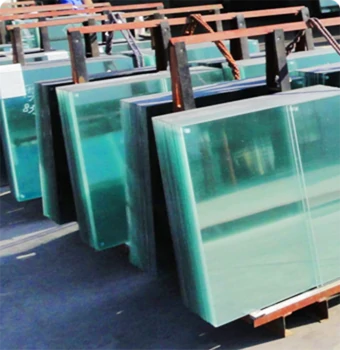Understanding Obscure Glazing Types Enhancing Privacy and Aesthetics
Obscure glazing, often referred to as privacy glass, has become increasingly popular in modern architecture and interior design. This specialized type of glazing is designed to diffuse light while obscuring visibility, making it an ideal choice for residential and commercial spaces that prioritize privacy without sacrificing natural light. In this article, we will explore various obscure glazing types, their applications, benefits, and considerations for use.
Types of Obscure Glazing
1. Frosted Glass One of the most common types of obscure glazing, frosted glass is treated to create a translucent surface. It allows light to pass through while concealing the details of the objects behind it. This type of glazing is popular in bathroom windows, office partitions, and shower doors.
2. Textured Glass Available in a variety of patterns, textured glass offers a unique aesthetic while maintaining privacy. The surface may have embossed designs or irregular patterns that scatter light and prevent clear visibility. This type is often used in doors, sidelights, and decorative windows.
3. Tinted Glass While primarily known for its light-reducing qualities, tinted glass can also provide a level of obscuration. It comes in various shades and can be particularly effective in commercial spaces where glare reduction and heat control are important, along with some degree of privacy.
4. Laminated Glass This type of glass consists of two or more layers with an interlayer that adds strength and sound insulation while providing a level of obscurity. Laminated glass can be treated with frosted films or patterns to enhance privacy, making it a versatile choice for both residential and commercial applications.
obscure glazing types
5. Etched Glass Etching involves carving designs into the surface of the glass, allowing for customized patterns that can add a decorative touch while obscuring visibility. This can range from simple designs to intricate artwork, often used in storefronts and high-end residential projects.
Benefits of Obscure Glazing
The primary benefit of obscure glazing is privacy. Homes, offices, and public buildings often require a balance between natural light and seclusion. Obscure glazing allows occupants to enjoy daylight without the feeling of being exposed to the outside world. Additionally, these glazing types can enhance safety by preventing people from seeing inside, thus deterring potential intruders.
Another advantage is the aesthetic appeal. With various patterns and treatments available, obscure glazing can complement architectural design while adding unique visual interest. Whether used in residential bathrooms, office meeting rooms, or retail display areas, these glass types can elevate the overall look of a space.
Considerations for Use
While obscure glazing is beneficial, it’s essential to consider the specific needs of the space. The level of privacy required, the amount of natural light preferred, and the overall design theme should all influence the type of obscure glazing selected. Additionally, maintenance and cleaning requirements may vary with different types of surfaces, thus impacting long-term satisfaction with the choice of glass.
In conclusion, obscure glazing types provide effective solutions for privacy and aesthetic enhancement in various settings. By carefully selecting the appropriate type, designers and homeowners can achieve a successful blend of light diffusion and concealment, contributing to more comfortable and visually appealing environments.
 Afrikaans
Afrikaans  Albanian
Albanian  Amharic
Amharic  Arabic
Arabic  Armenian
Armenian  Azerbaijani
Azerbaijani  Basque
Basque  Belarusian
Belarusian  Bengali
Bengali  Bosnian
Bosnian  Bulgarian
Bulgarian  Catalan
Catalan  Cebuano
Cebuano  Corsican
Corsican  Croatian
Croatian  Czech
Czech  Danish
Danish  Dutch
Dutch  English
English  Esperanto
Esperanto  Estonian
Estonian  Finnish
Finnish  French
French  Frisian
Frisian  Galician
Galician  Georgian
Georgian  German
German  Greek
Greek  Gujarati
Gujarati  Haitian Creole
Haitian Creole  hausa
hausa  hawaiian
hawaiian  Hebrew
Hebrew  Hindi
Hindi  Miao
Miao  Hungarian
Hungarian  Icelandic
Icelandic  igbo
igbo  Indonesian
Indonesian  irish
irish  Italian
Italian  Japanese
Japanese  Javanese
Javanese  Kannada
Kannada  kazakh
kazakh  Khmer
Khmer  Rwandese
Rwandese  Korean
Korean  Kurdish
Kurdish  Kyrgyz
Kyrgyz  Lao
Lao  Latin
Latin  Latvian
Latvian  Lithuanian
Lithuanian  Luxembourgish
Luxembourgish  Macedonian
Macedonian  Malgashi
Malgashi  Malay
Malay  Malayalam
Malayalam  Maltese
Maltese  Maori
Maori  Marathi
Marathi  Mongolian
Mongolian  Myanmar
Myanmar  Nepali
Nepali  Norwegian
Norwegian  Norwegian
Norwegian  Occitan
Occitan  Pashto
Pashto  Persian
Persian  Polish
Polish  Portuguese
Portuguese  Punjabi
Punjabi  Romanian
Romanian  Russian
Russian  Samoan
Samoan  Scottish Gaelic
Scottish Gaelic  Serbian
Serbian  Sesotho
Sesotho  Shona
Shona  Sindhi
Sindhi  Sinhala
Sinhala  Slovak
Slovak  Slovenian
Slovenian  Somali
Somali  Spanish
Spanish  Sundanese
Sundanese  Swahili
Swahili  Swedish
Swedish  Tagalog
Tagalog  Tajik
Tajik  Tamil
Tamil  Tatar
Tatar  Telugu
Telugu  Thai
Thai  Turkish
Turkish  Turkmen
Turkmen  Ukrainian
Ukrainian  Urdu
Urdu  Uighur
Uighur  Uzbek
Uzbek  Vietnamese
Vietnamese  Welsh
Welsh  Bantu
Bantu  Yiddish
Yiddish  Yoruba
Yoruba  Zulu
Zulu 

